1957 Moto Morini 175GT Top End Disassembly
Disassembling the top end of a Moto Morini 175 is pretty straight-forward. I did not encounter any significant challenges.
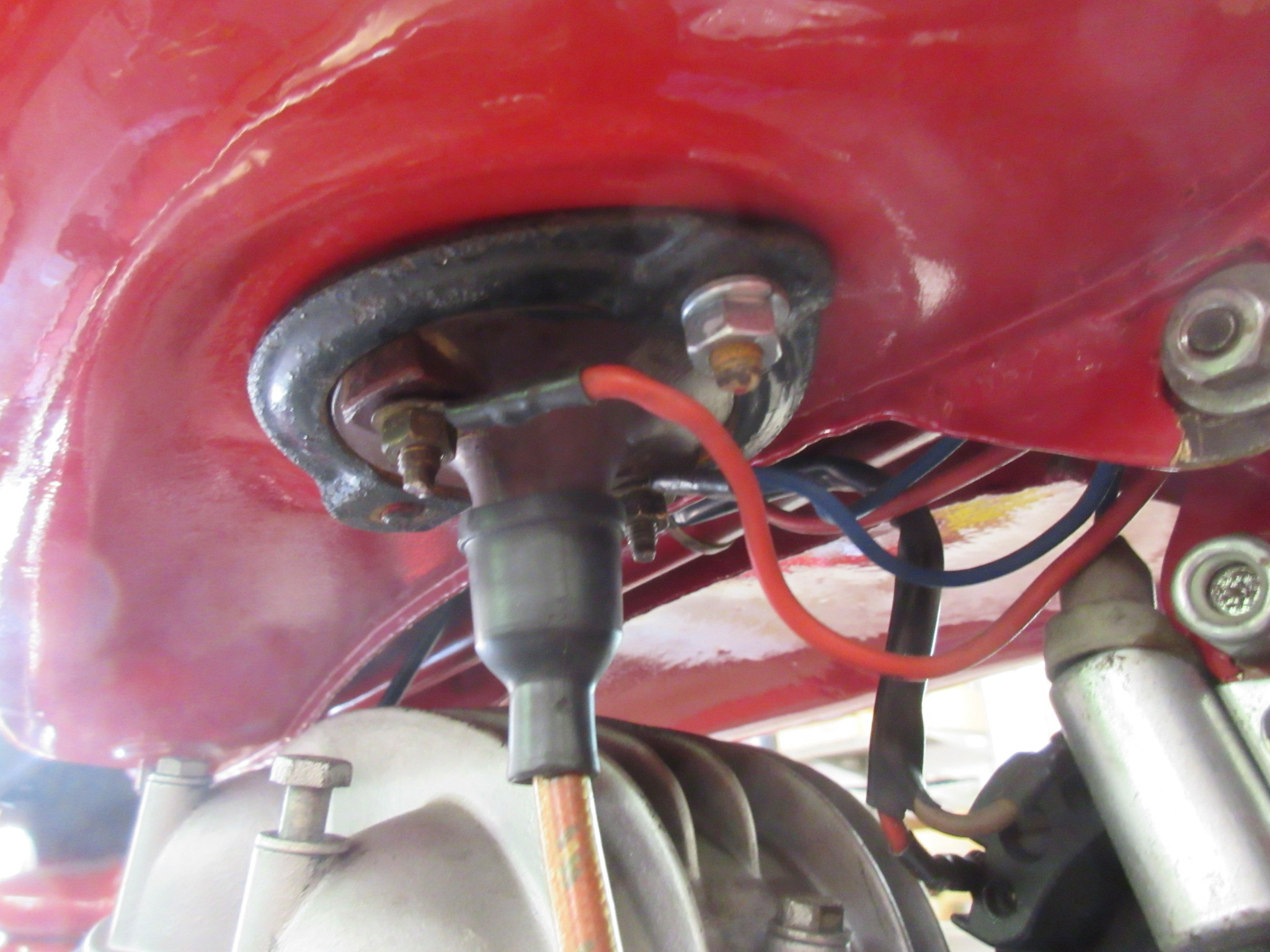
You’ll need to remove the gas tank. The ignition coil is embedded into the tank. You can leave it there, just disconnect wires and high tension lead.
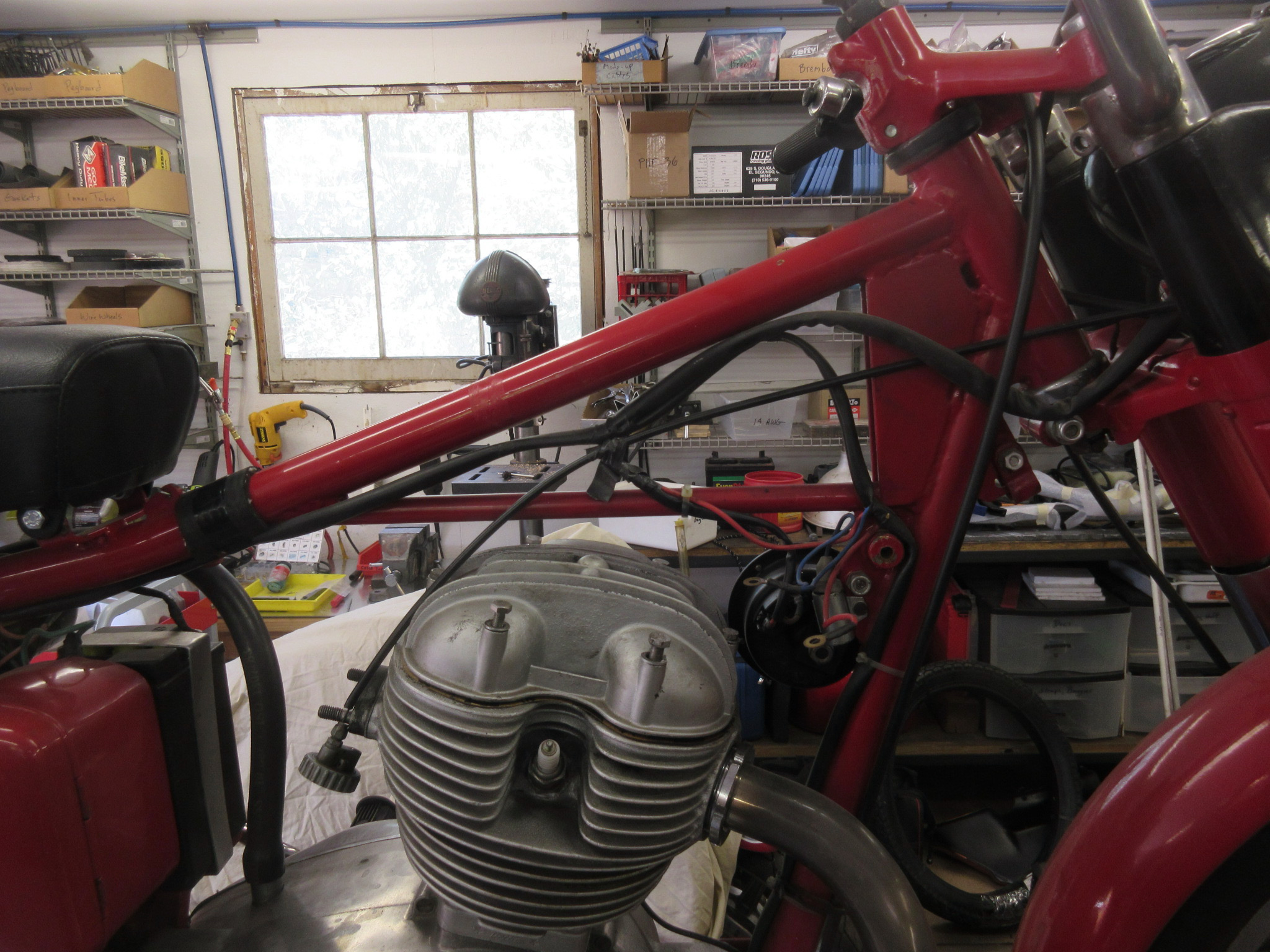
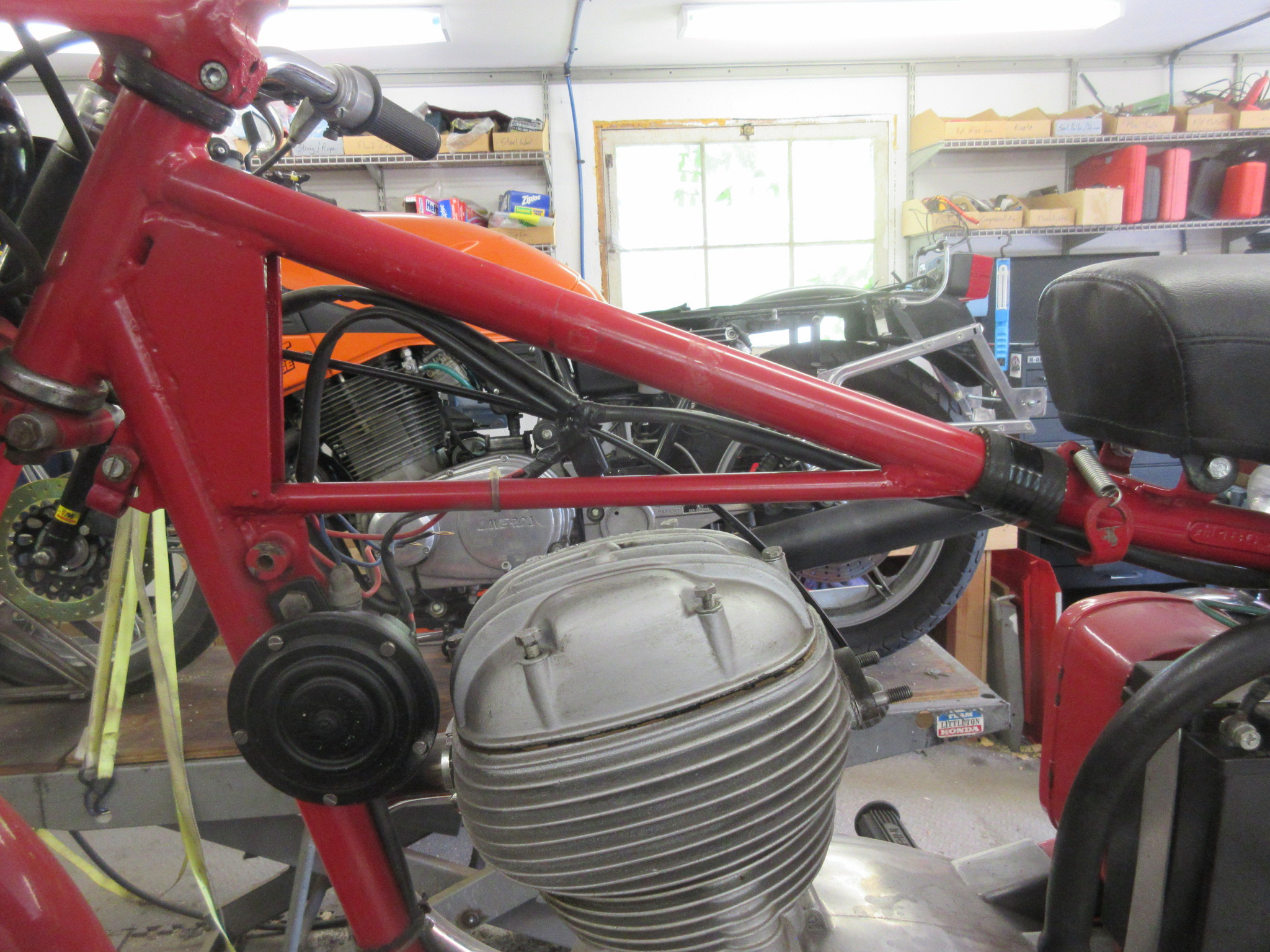
Six bolts hold the valve cover.
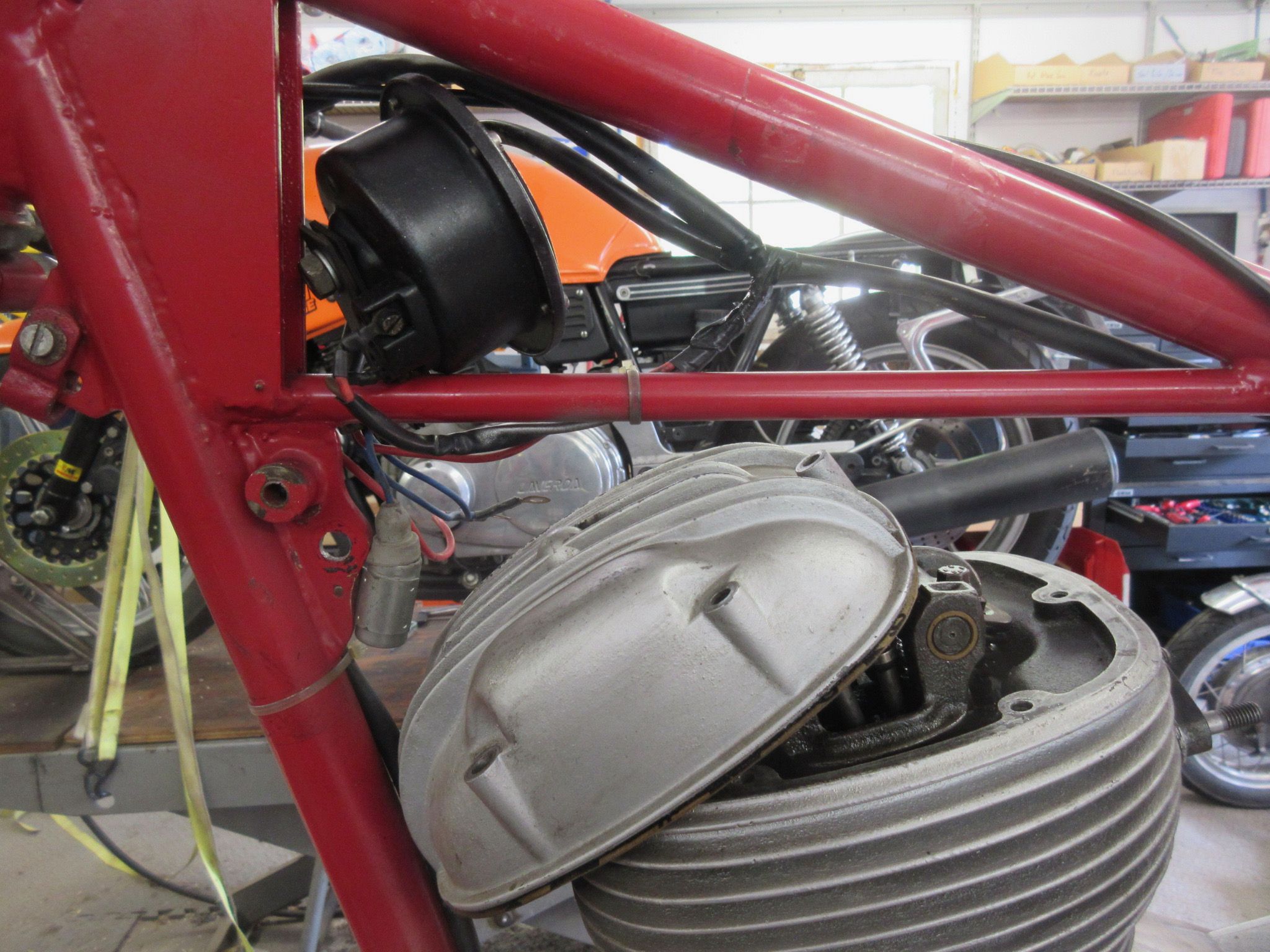
The horn needs to be moved and then the valve cover comes off to the front.
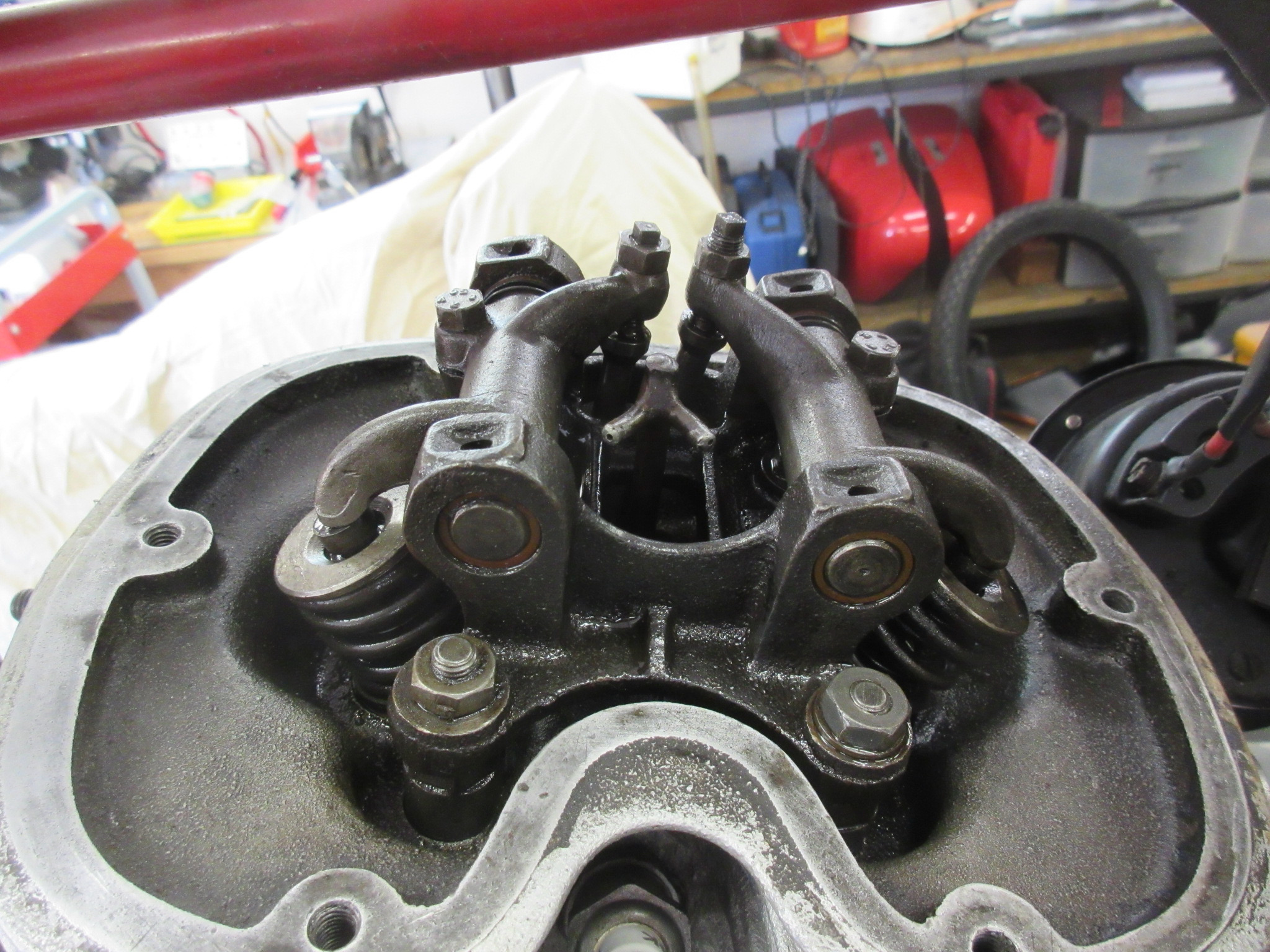
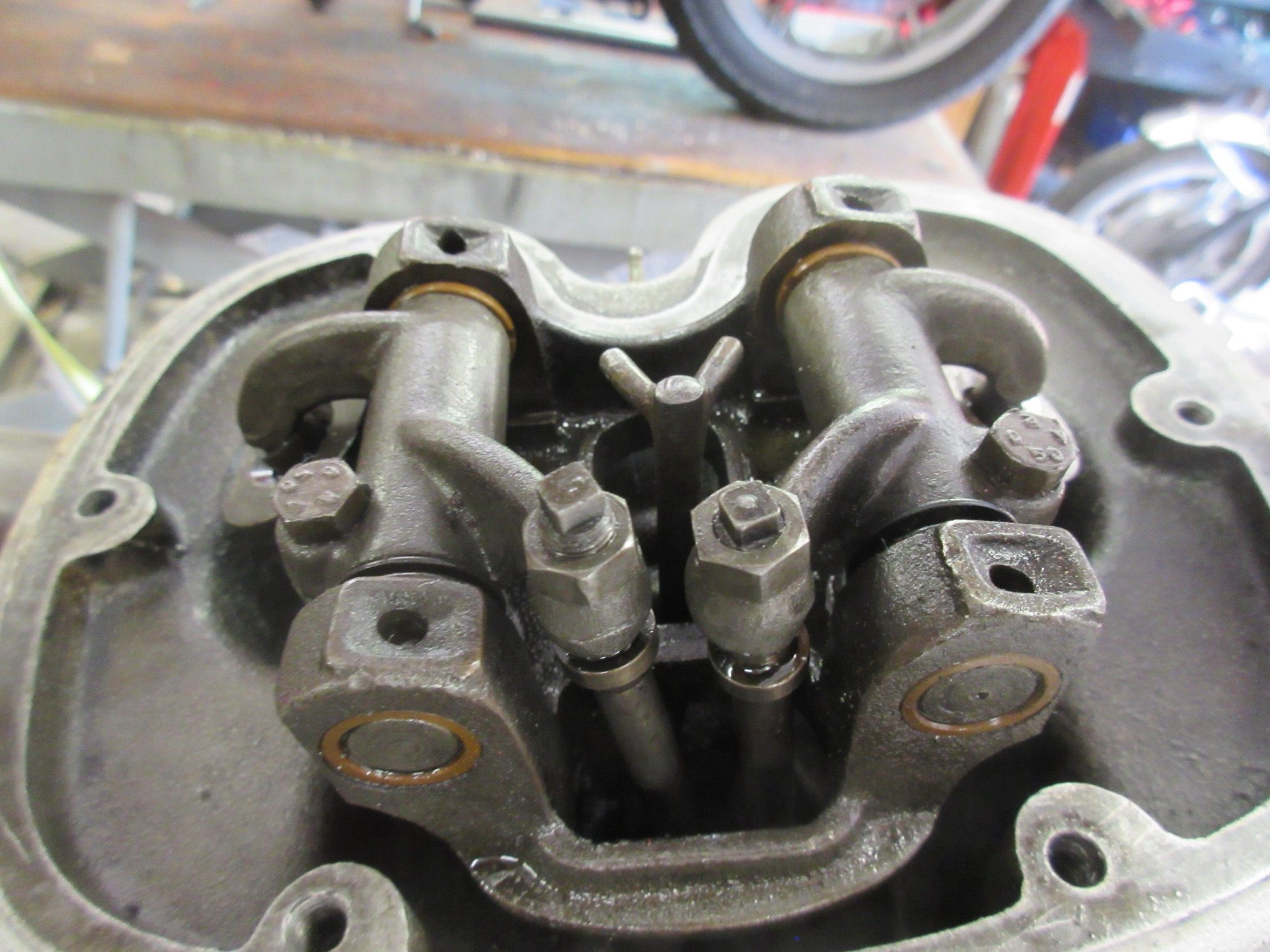
The rockers are quite substantial, probably could be lightened. Notice the v-shaped oil spritzer in the middle. Paul Compton informs me that later engines did away with that oil feed and relied on oil mist for lubrication, anticipating the system used in the 3-1/2. The rocker assembly is attached to the four head bolts with nuts.
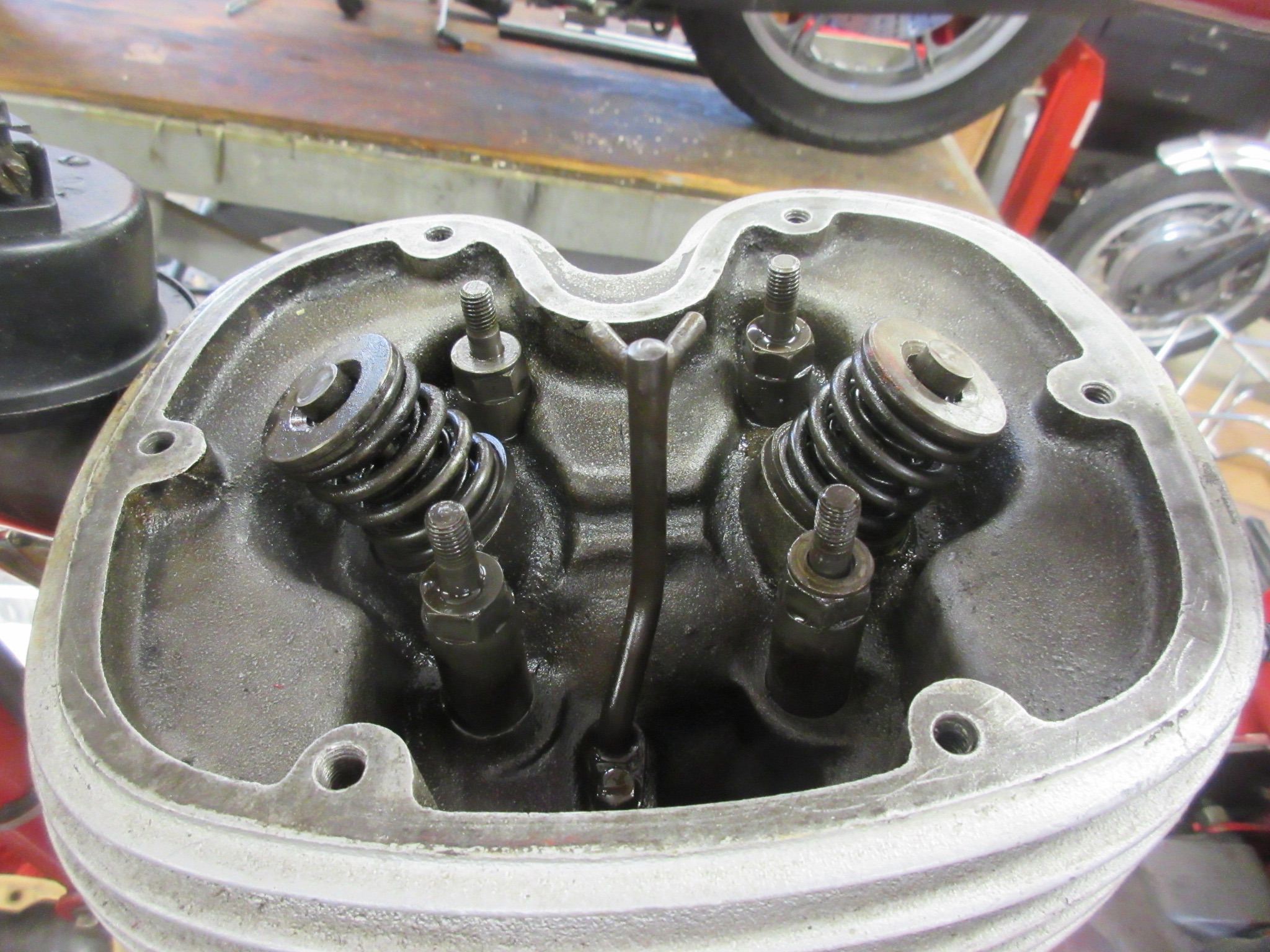
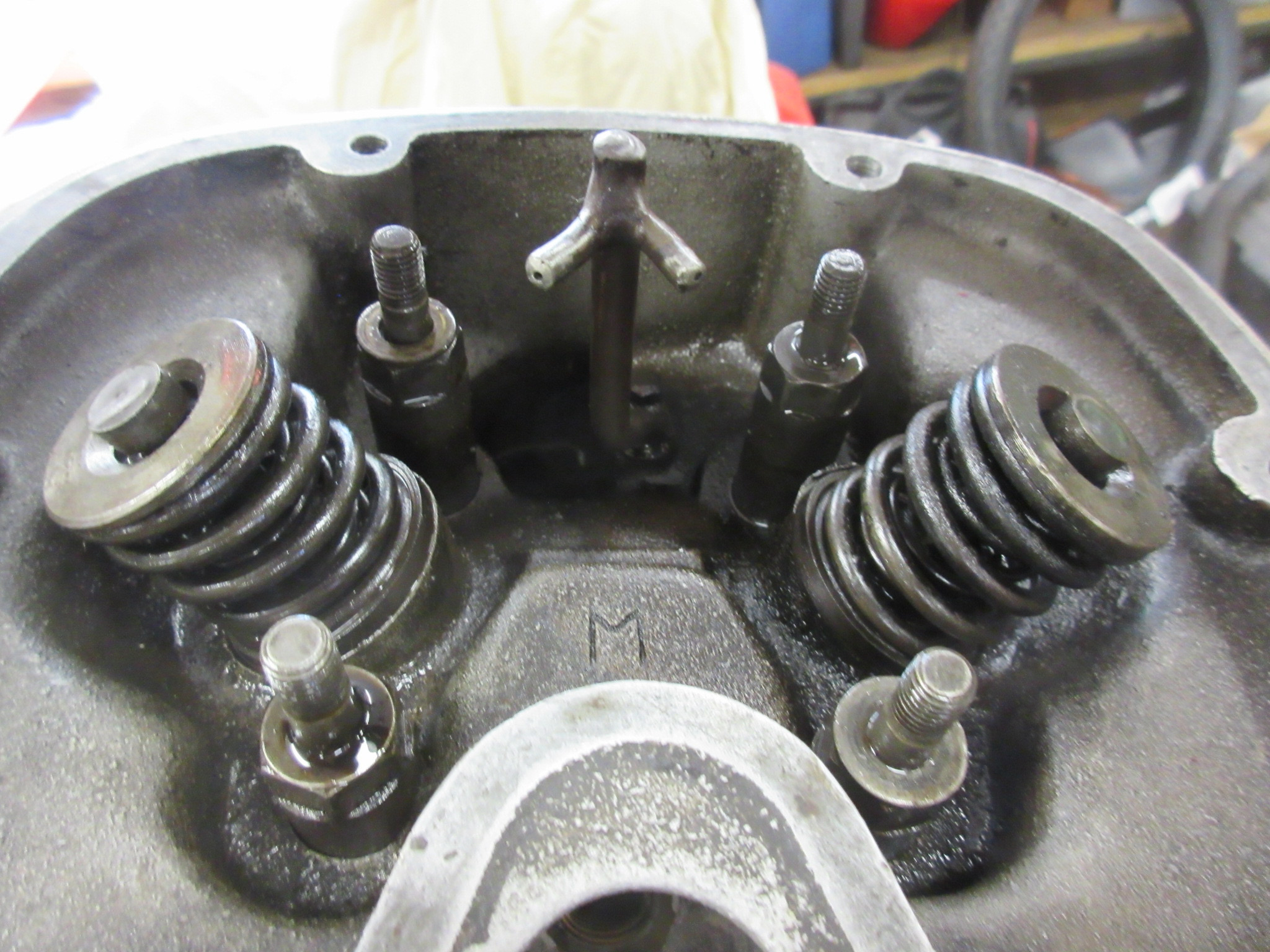
Note the caps on the ends of the valve stems. In my engine they were dished, so I need to try to source new ones, have these flattened (if there’s enough metal), or find a substitute.
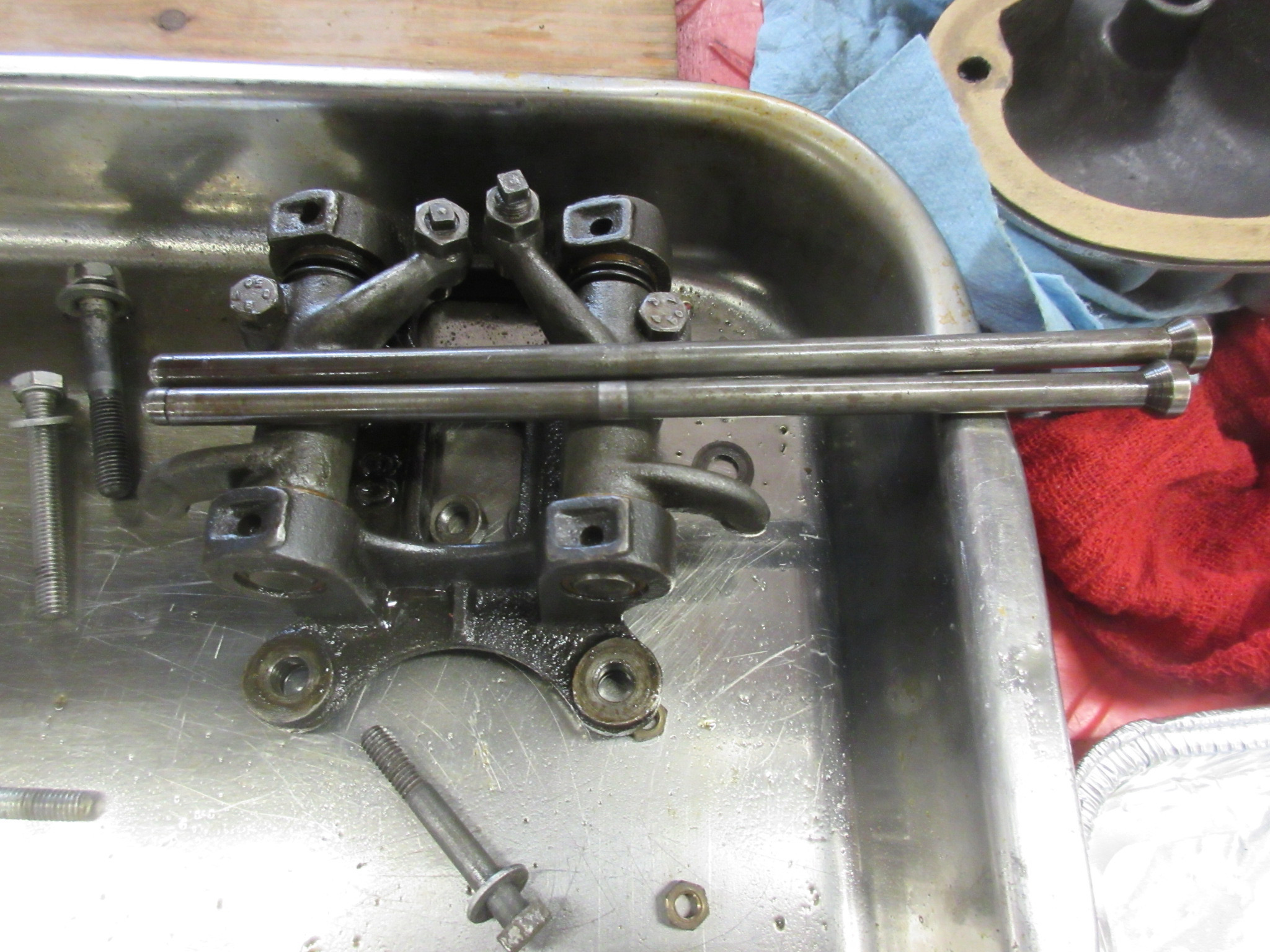
Pushrods are unequal length. Longer one is the exhaust and goes on the outside.
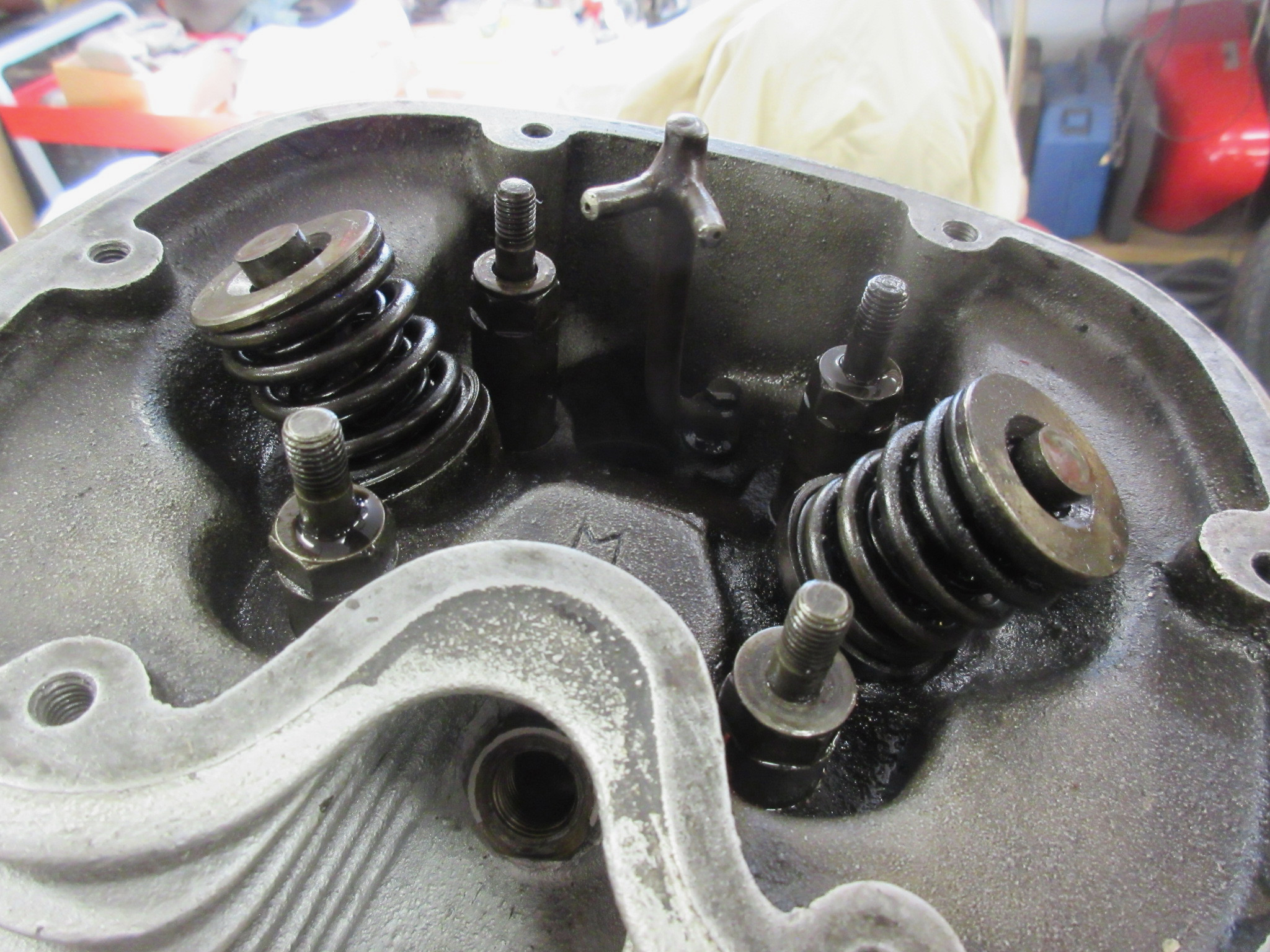
The four studs are the head bolts. Watch for spacers. On re-assembly it looks like one needs to pay close attention to the alignment of the rocker gear; shims may be needed on some studs to account for variations in how far the head bolts seat. Simply replacing any shims you found in their original positions may not be sufficient.

After the head was removed I can see this engine has been bored at least once. The stock bore is 60.0 mm. Absence of carbon on the piston top shows it has hardly been run since the overbore to 60.6 mm, but it looks like that piston was not new when installed, they just cleaned it up a bit on top.
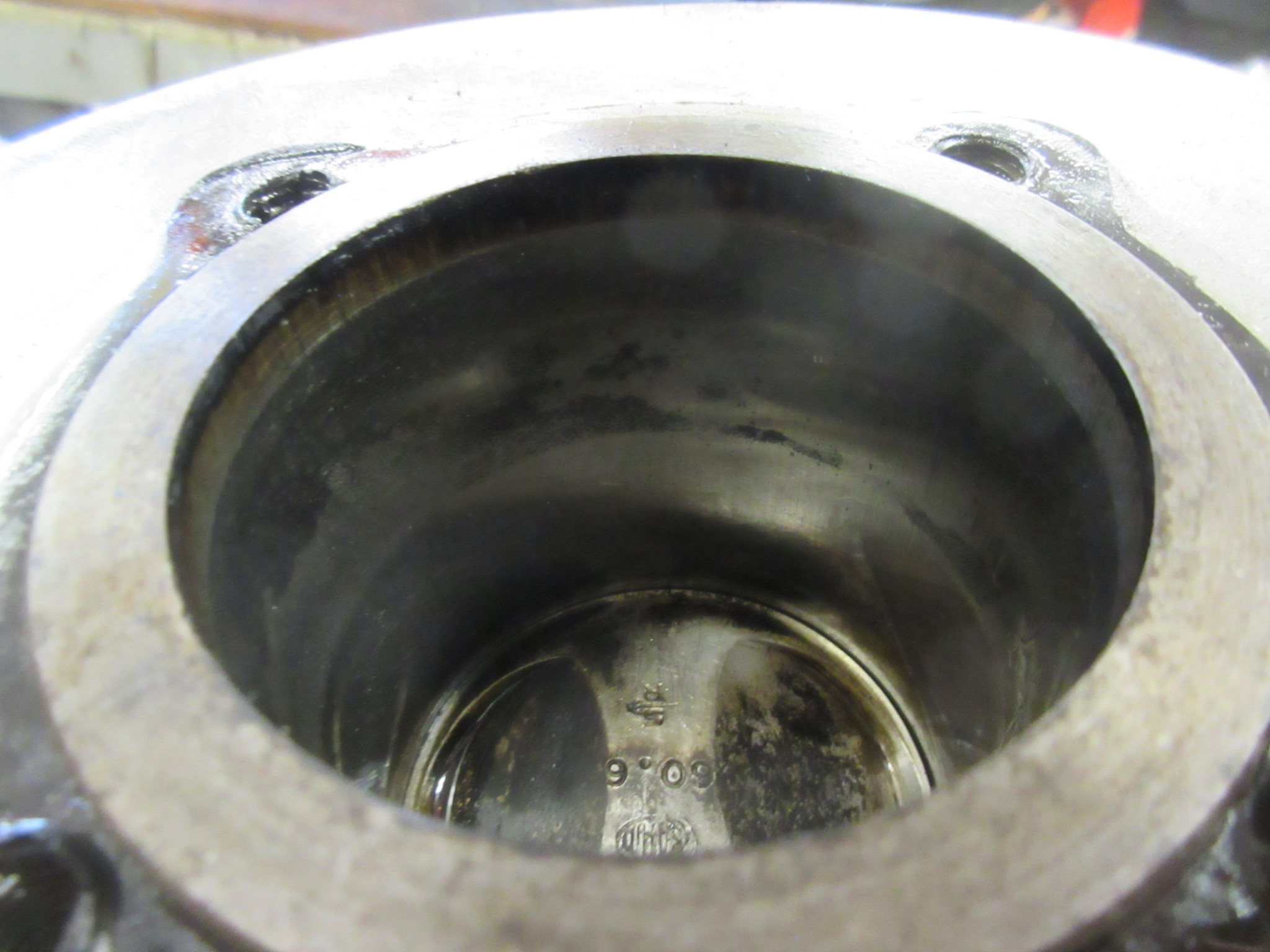
Even though it was recently bored, there is still some deep pitting halfway down the bore that did not get taken out, and it will need to be bored again, probably to at least 61.2 mm, according to the judgement of my machinist. My theory: Someone went through the top end after the bike had sat for a long time, probably with the stock piston, and found the rings had corroded against the bore pretty badly. Maybe the piston was even stuck. They had this good used piston at 60.6 on hand and hoped that much overbore would clean up the pitting. It didn’t quite get it all, but they went ahead and put it together anyway.
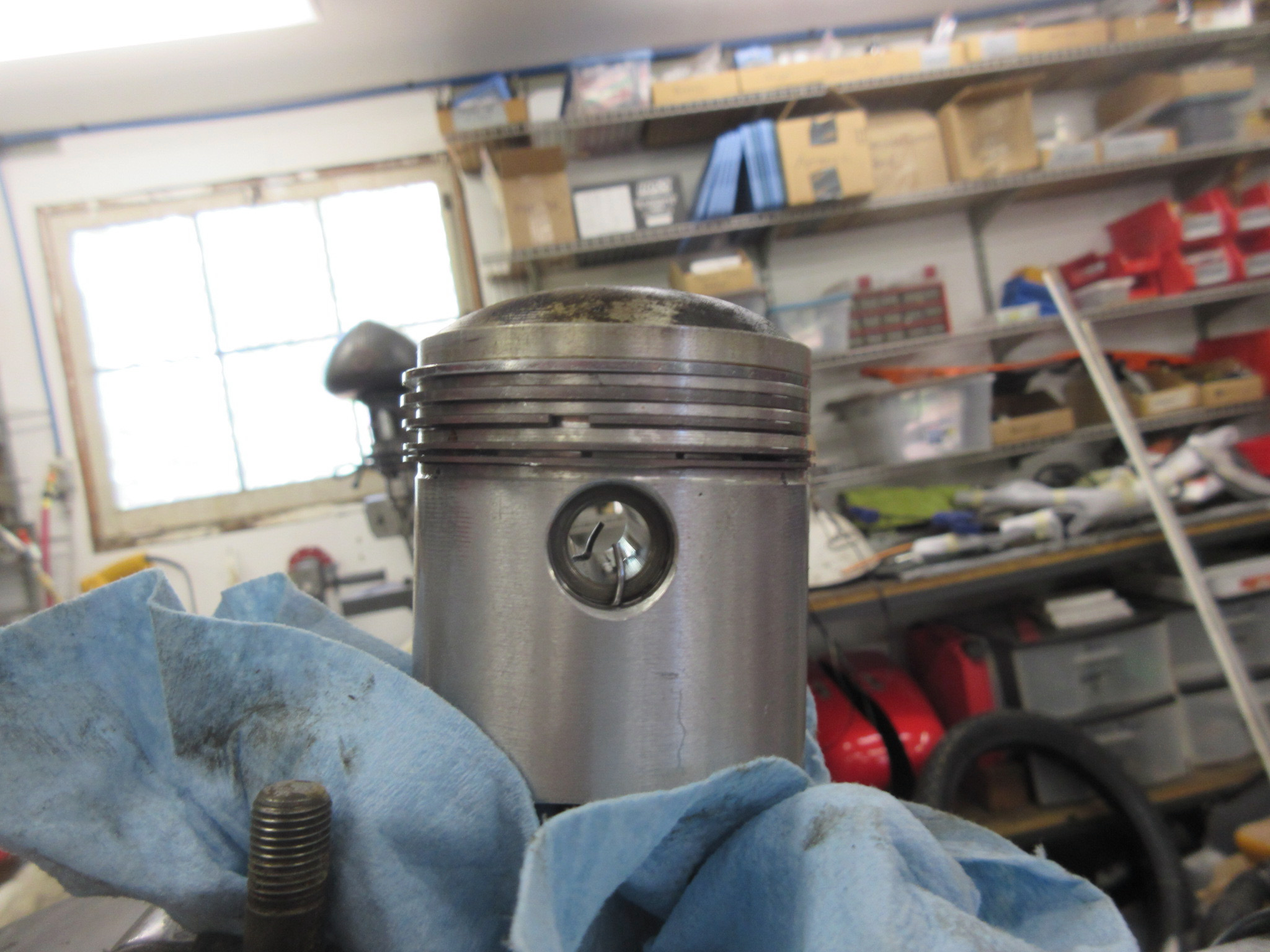
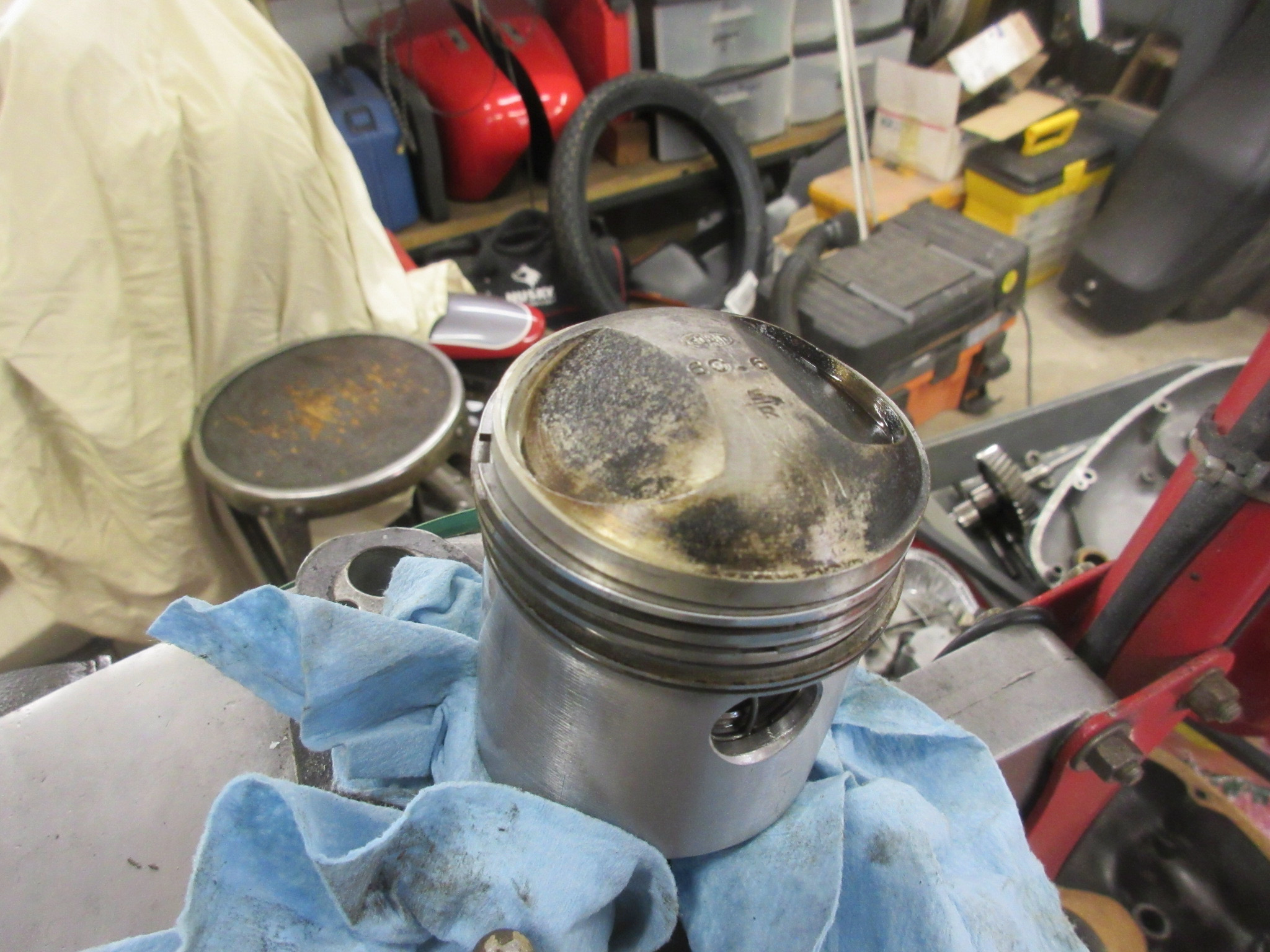
This piston is not a stock GT piston (7.8:1 CR), which has only a very modest dome, almost a flat top. This is probably a piston for an early Settebello or 175 Super Sport, which presumably used a 16mm wrist pin like the GT. This piston was made by Sciam and is marked 535B on the inside but I can’t find any data on Sciam product numbers to confirm it. At some point, maybe from the beginning in 1958, the Tresette and Tresette Sprint used an 18mm wristpin.
The last thing to do at this stage is check the play of the piston and wristpin and the big end (needle bearings) on the connecting rod. The piston and wristpin were fine. There was no detectable radial play (up and down) on the big end but the rocking motion side-to-side seemed excessive. That is discussed further in the main page about the engine teardown, but the bottom line is that I think it’s OK.
